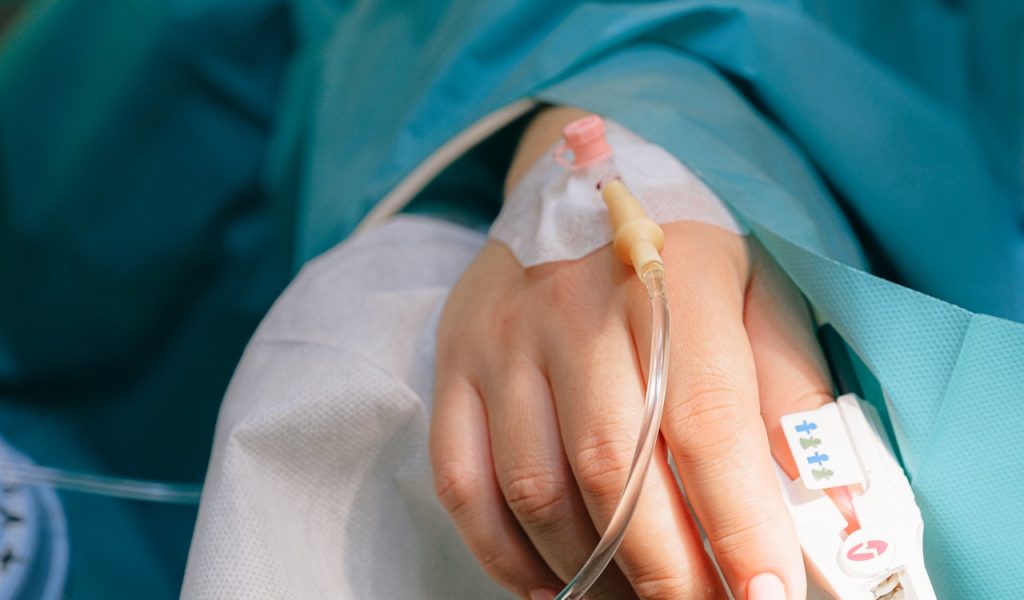An Intern's Guide to:
Emergency Medicine
27th january 2021

Hello again!
This is the third article in a three part series on how to survive (and thrive) in your mandatory intern rotations – General Surgery, General Medicine, and Emergency Medicine.
Today, let’s explore how to tackle your Emergency Medicine rotation.
In my experience, junior doctors either love or hate Emergency Medicine. Some thrive in the fast-paced atmosphere and others don’t like the constant shift work or the time pressure of ED. Whichever category you fall into, I would argue that every junior doctor can learn something from their Emergency Medicine rotation.
Emergency Medicine is a great foray into understanding how patients are triaged and distributed across the hospital. Remember that not everything you see in ED will be a life or limb-threatening emergency. As an intern, you can see anything from a sore thumb, to the man flu to a STEMI.
Alright, let’s crack on.
What is a Typical Day in Emergency Medicine:
Working in an Emergency Department is all about shift work, shift work and MORE shift work. Every hospital is different but most shifts can be broken down into 3 categories.
- Day Shifts: Usually from 8am until 6pm
- Evening Shifts: Usually from 12/1pm until 11pm/midnight
- Night Shifts: Usually from 10pm until 8am
If your department is nice, they will group these shifts so you can have some semblance of a normal sleep-wake cycle. Here’s hoping!
Depending on the size of the ED you work in, there will be various sub-areas. These include:
- Resus: This is what the the traditional ‘TV Emergency Room’ looks like. It’s where the critically unwell patient is wheeled in on a stretcher and tending to. This is where lives are save. It’s more formally known as where Category 1 and 2 patients will go.
- Acute: This is the middle ground between Resus (see above) and Fast Track (see below). You will often see some very sick people in this area of the ED. It can be a challenging area to navigate as a lot of the patients are undifferentiated and requiring investigations to delineate their ailment. Usually Category 2, 3 or 4 patients can be found chilling here.
- Minors/Fast Track: This is where all the ‘not so life or limb-threatening’ emergencies end up. This is where you’ll find anything from a sore thumb to a bleeding bum. More formally known as Category 3, 4 or 5 patients.
- Short Stay: This section is dedicated to patients who are waiting on pathology/imaging/specialty consultation. They can remain in this area for up to 24 hours pending further management.
Each shift in the ED involves being allocated to one of the above sub-areas. From here on, your job is to see patient after patient after patient.
How to “Work Up” Patients in the ED:
As a junior doctor working in ED, your job will be to “work up” patients. This usually involves taking a thorough history, perform an examination and order some baseline investigations before consulting with a senior member of your team to make a plan.
The process of “working up” can seem very foreign when you first start out. I tend to liken it to a detective who goes on the hunt for a criminal. In this case, the ‘criminal’ is the cause of the patient’s illness. Sometimes you will find an answer, other times you will not.
I’ve found that the best way to approach ED presentations is to identify common symptoms and develop plans to execute these. For example,
- Focused history including associated symptoms
- Thorough cardiovascular and respiratory examination
- ECG
- Pathology (baseline bloods, troponins, BNP)
- Imaging (CXR etc.)
- Thorough history including onset, nature and associated symptoms
- Focused abdominal exam
- A full panel of bloods (FBC, E/LFTS) +/- urinalysis
- Imaging
If you are able to assess the patient and organise a few of these investigations, this will make it much easier for you and the senior doctor (registrar or consultant) to develop a management plan for this patient.
Try and come up with a management plan on your own, before you present the patient patient to a registrar or consultant. The plan can be as simple as analgesia, observation then re-evaluation. Your plan may not be correct, but it does demonstrate to the registrar/consultant that you have thought about how to manage the patient.

Symptom Management in the ED:
The Emergency Department the initial port-of-call for most hospital admissions. It is the place where you try and get the patient comfortable and hone in on their presenting complaint. In order to get the patient comfortable, it is important to have an arsenal of go-to medications up your sleeve. Ideally, you want two or three options to manage each of the following complaints:
- Paracetamol & ibuprofen
- Oxycodone
- Fentanyl or morphine
- Alternatives if your patient is allergic to the above
- Ondansetron
- Metoclopramide
- An alternative if they can’t tolerate either
- Movicol
- Coloxyl and senna
- Lactulose
- Go on, solve some constipation, make someone’s bowels move, be a hero
- IV fluids (normal saline, Hartmann’s)
- Antibiotics based upon your local resistance
For any patient that is acutely unwell, try and provide some symptomatic relief before conducting your assessment. This will benefit both you and the patient.
How to “Present” Patients in the ED
After you have worked the patient up, it is time to approach the registrar or consultant and develop a plan of action. This involves “Presenting” a patient which is exactly as it sounds. It is a short summary or “presentation” of the patient you have just seen cue jazz hands.
ED is a great place to practice succinct and useful handovers. When giving a handover or presenting a patient it is important to present all the pertinent information first. Think about SBAR (Situation Background Assessment Recommendation). A good way to start is:
“I’ve just seen Mrs D, a 80 year old female who I think has an exacerbation of COPD and may require admission.”
This is a great first line because it is packed with important information:
-
the patient demographics
-
the provisional diagnosis
-
the disposition of the patient.
This is all most seniors really care about, because it makes their job easier and helps the department run smoothly.
If the senior hasn’t lost interest after your amazing first line (fingers crossed!), you can then elaborate on the rest of the story….
“She presented with a 2 day history of shortness of breath, productive sputum and temperatures. On examination she is febrile with crackles in the left lung base. Her CXR shows consolidation in this area and she has a raised white cell count. I’ve given her some oxygen and a salbutamol nebuliser.”
This is much more effective than…
“Mrs D has a some shortness of breath for the past two days, she’s coughing a lot and her chest doesn’t sound great…”
This system works well if you have a very strong inclination about what the diagnosis could be. Other times, you simply won’t have a clue and it is okay to go…
“Mr X still remains very undifferentiated. She’s presented with a history of abdominal pain but her examination and investigations are unremarkable thus far. Would you be able to help me?”
So in summary, presenting patients in ED should be short and succinct with the main points conveyed in the shortest amount of time.

Disposition:
Disposition refers to where the patient is to go after they have been assessed in the ED. This usually refers to one of three scenarios:
1. Discharge home with appropriate follow up and representation advice
2. Admit to an interim ward for further observation (e.g. medical assessment unit)
3. Admit to a specialty team for further assessment and management (e.g. cardiology, respiratory)
Working out a patient’s disposition is something I struggled with earlier on. How do you know when it is safe to discharge someone? How sick does someone have to be to get admitted to hospital? There are no concrete rules for this sort of stuff. It’s called ‘Clinical Reasoning’ for a reason and it is something that you will develop with experience. As an intern, I would focus on assessing the patient thoroughly and then discussing disposition with your seniors. By the end of the rotation, you will get a feel for the patients that go home and the patients that stay in hospital.
Time Management in ED
Time management is another really important aspect of working in ED. Whilst you want to maximize the number of patients you see, it is important to make sure that you are thorough and providing adequate patient care. Start with one patient at a time. Be as efficient as you can with this patient. If you can see that they have come in with chest pain, chart some basic pain relief and take some bloods (or ask kindly and one of the nurses might oblige you). Whilst you are waiting for your pathology results to come back, you can perform a history and examination. Then you can sit down to write your note (and gather your thoughts) before presenting to the consultant.
On average, I would see 4 to 5 patients per shift in the ED. This would depend on what area I was working in (you often see more patients in fast track compared to resus) and the complexity of each patient. As your confidence grows, you will be able to have more than one patient on the go at a time. You can start seeing the second patient whilst you wait for investigations to come back for the first patient.
As you near the end of your shift (last 30-45 mins), ensure that you have completed all relevant tasks and that each patient has a robust plan (this could be for admission or discharge). Use this time to complete any medication charting, discharge paperwork or documentation. If you have patients left in the department at the end of your shift, HAND THEM OVER! The whole point of ED is to handover patients so you don’t have to stay back late. The department runs 24 hours a day. You can’t be sitting there all day waiting for a specialty team to consult on your patient. Hand that ‘ish over.

RESUS!!
This is probably what you’re friends and family think you do when you go to work in the Emergency Department (#savelives). As an intern, you will get limited experiences in resus (especially if you work in a tertiary facility). If you are allowed into the hallowed walls of the resus bay, your main job will be to get access (i.e. insert a cannula) and take some bloods. If you do get this opportunity, take a look around and see how an actual resus runs. Identify the team leader and observe how they make decisions and delegate tasks to the rest of the team. It’s a really good learning experience.
Benefits of ED:
There are NO LISTS! (yoohoo!) and in general, there is significantly less paperwork than a standard ward job. There are also no computer on wheels (COWs). If you are lucky, you might even snag yourself a desktop computer and a well-worn swivel chair. Due to the nature of shift work, you can handover patients at the end of your shift to the oncoming doctors. Unless you are extremely busy, you shouldn’t be staying back past your finish time.
Downsides of ED:
Just a bucket load of shift work.
The occasional aggressive or abusive or downright difficult patient.
The constant beeping. Everything beeps. The machines beep. The department beeps. You beep. I beep. We all beeeeep.
Common Presentations to ED:
- Chest pain
- Abdominal pain
- Shortness of breath
- Nausea/vomiting/diarrhoea/constipation
- Broken bones (NOFs, FOOSH’s)
- Infections (cellulitis)
- Migraines/headaches
- PV bleeding
- Mental Health
- Intoxication (you will become an expert at this after a few weekend shifts!)
Top 10 Tips for Your Emergency Medicine Term:
As an intern, it is important to get the basics right. Perform a thorough history and examination that RULES IN relevant conditions and also RULES OUT red flags.
When you first start out in the ED, you will be a bit lost as to what to do with your patients. Just ask!
In the ED, it is very common to come across a scenario where a patient has been waiting for hours in the corner of the waiting room or in the ED itself. By the time they are seen (often by one of the junior doctors), they can be extremely unwell. If you experience this scenario, it is important to seek help earlier so that further care can be expedited. I had this happen to me when a very frail woman was found with a suboptimal GCS and cold sepsis after waiting in the ED for 3 hours. Not ideal…
Common examples: chest pain, PV bleeding…Internship is the one year you are FULLY supervised and can ask as many questions as you want. In fact, I would argue its the best time to see presentations you are uncomfortable with, because you are guaranteed to get help and learn.
ED is a great place to practice basic history taking and examination skills. It is also a great learning environment for improving procedural skills such as cannulation, suturing and plastering.
In the ED, there are a team of great clinicians on the floor. This can be from the consultant, to registrars, to other residents/interns, nurses, social workers and physiotherapists. These guys have a wealth of experience and can often help you manage your patients.
The person with acute chest pain deserves your immediate attention. The person with the stubbed toe will survive the next hour (or day…).
When you first start out in ED, it’s important to manage one patient at a time. Understand how the patient flow works – from the waiting room to triage to assessment to disposition (discharge or admission). Once your confidence builds, you can try your hand at managing two patients on the go. Whilst you are waiting on pathology/imaging to come back for your first patient, you can pick up a second patient. Remember, it’s not how many patients you see on a shift, but the quality of care you deliver. It’s also not a competition to see the most number of patients in a shift.
ED shifts are often 10 or 12 hours in duration. This is a loooong time. Unlike other specialties, there is no spontaneous down-time in the ED. There is no post-ward round lull where you can duck off for a coffee or have a friendly chat. Which is why it is so important to take your breaks when you are on ED. Take a full mid-shift break. Ideally, try and get away from the hub-bub of ED. Go to the doctor’s lounge or the cafeteria or outside (if it’s still daylight).
May you save some lives (and have some fun along the way),
Doctor Nisha








